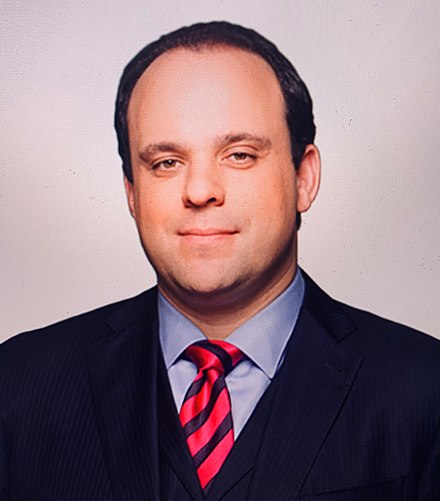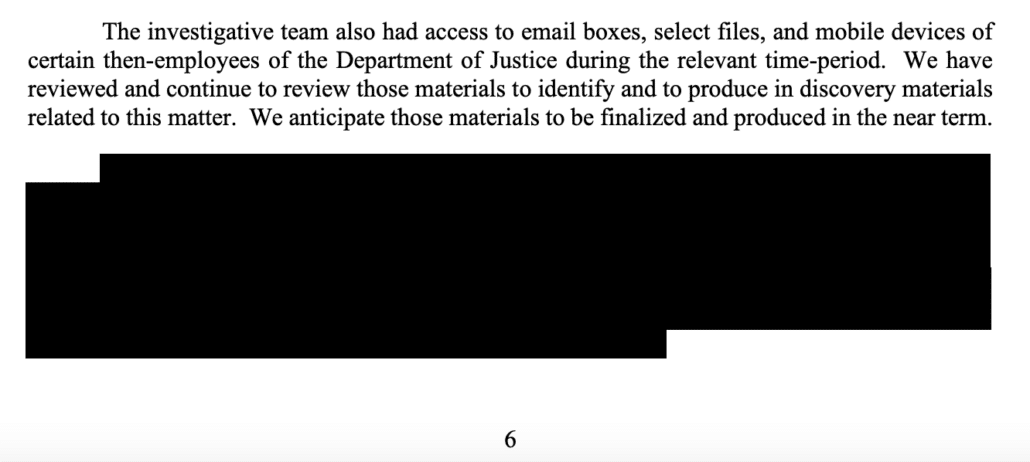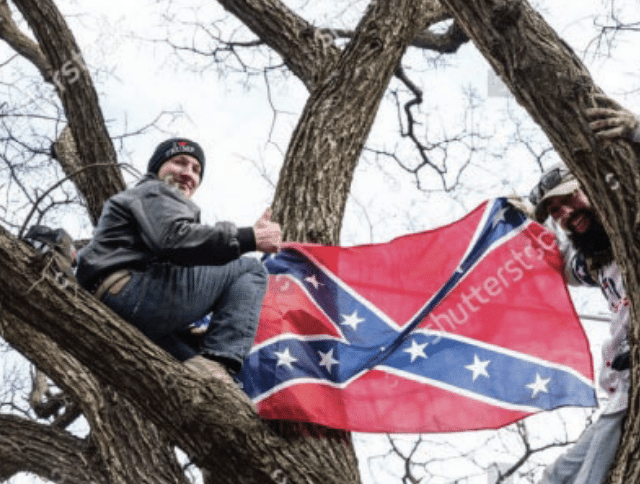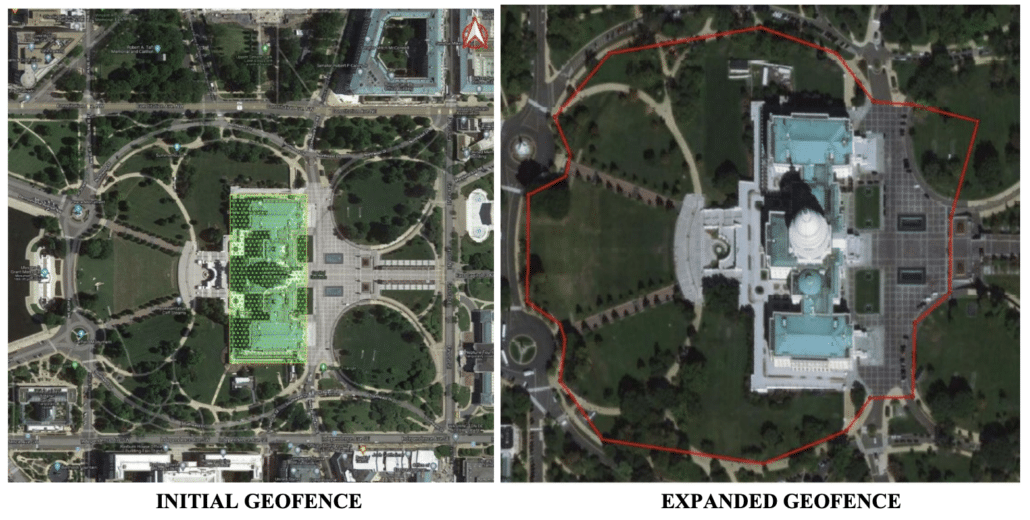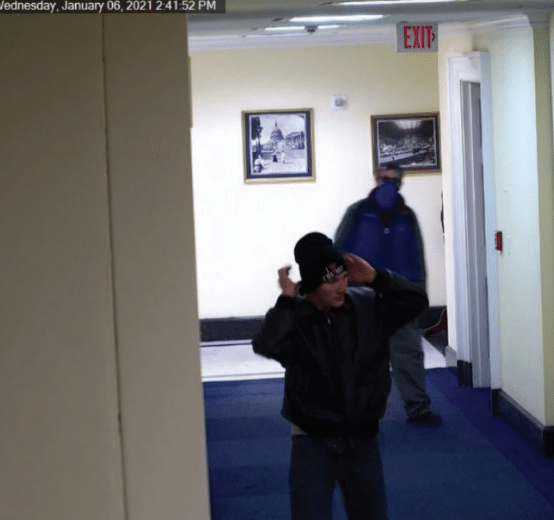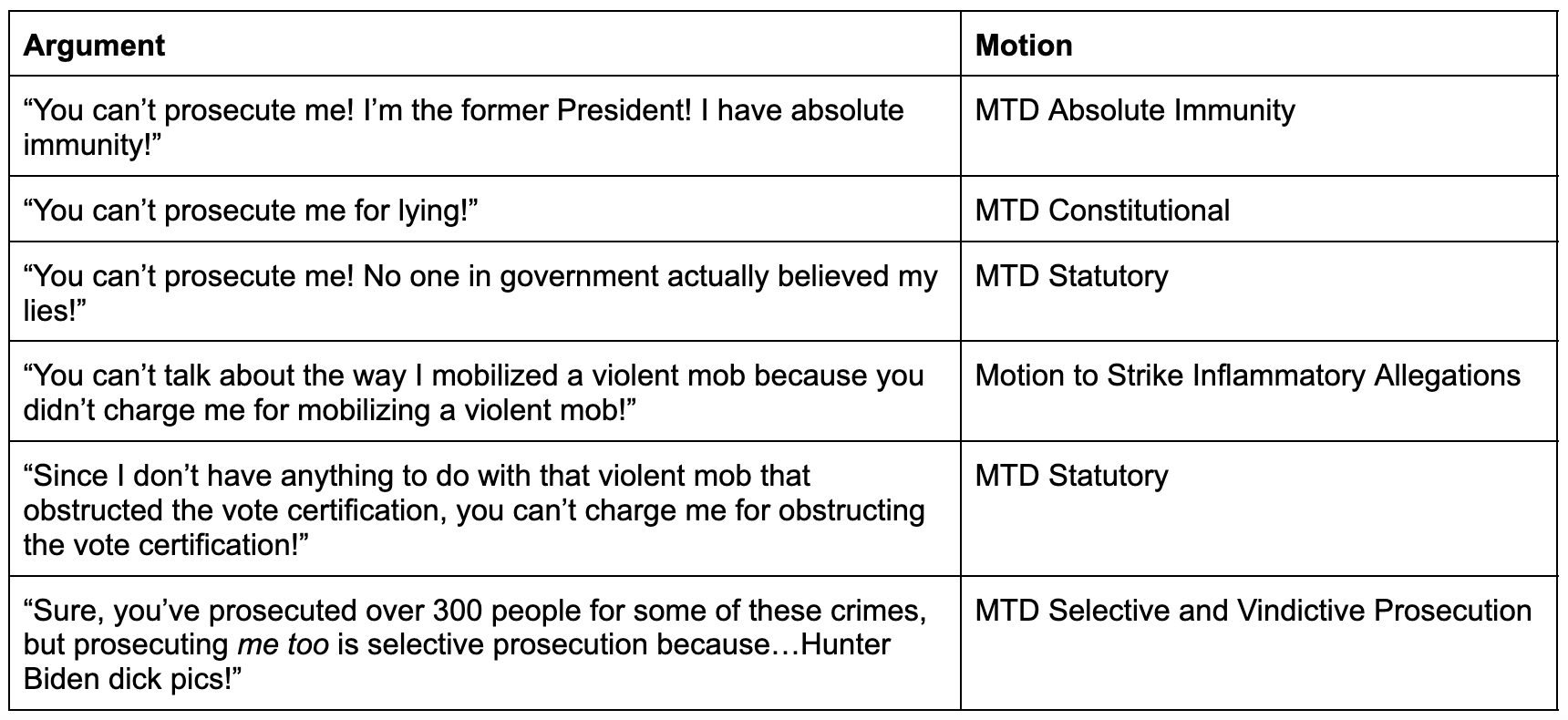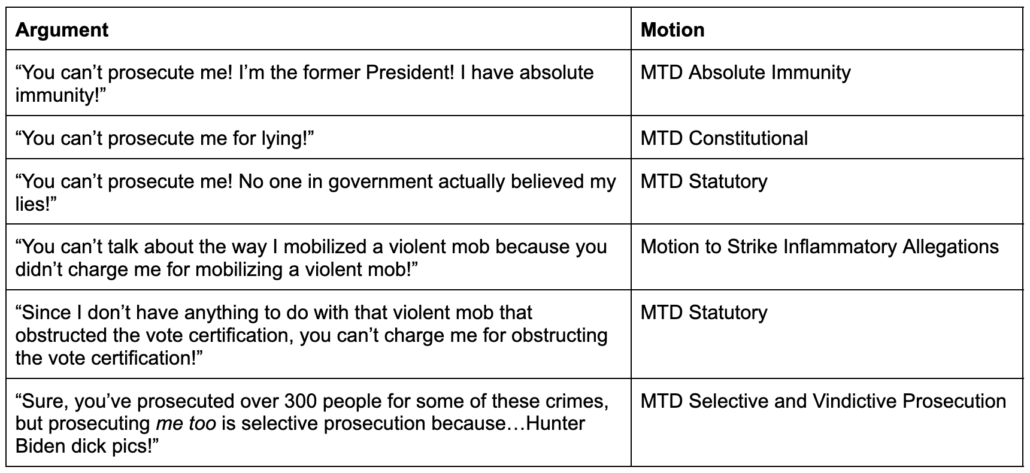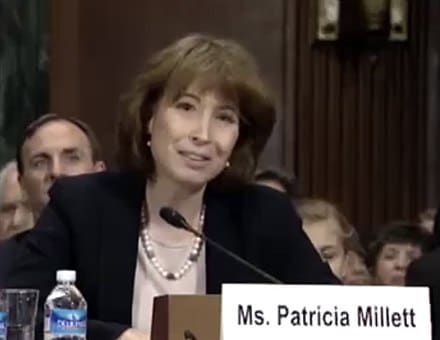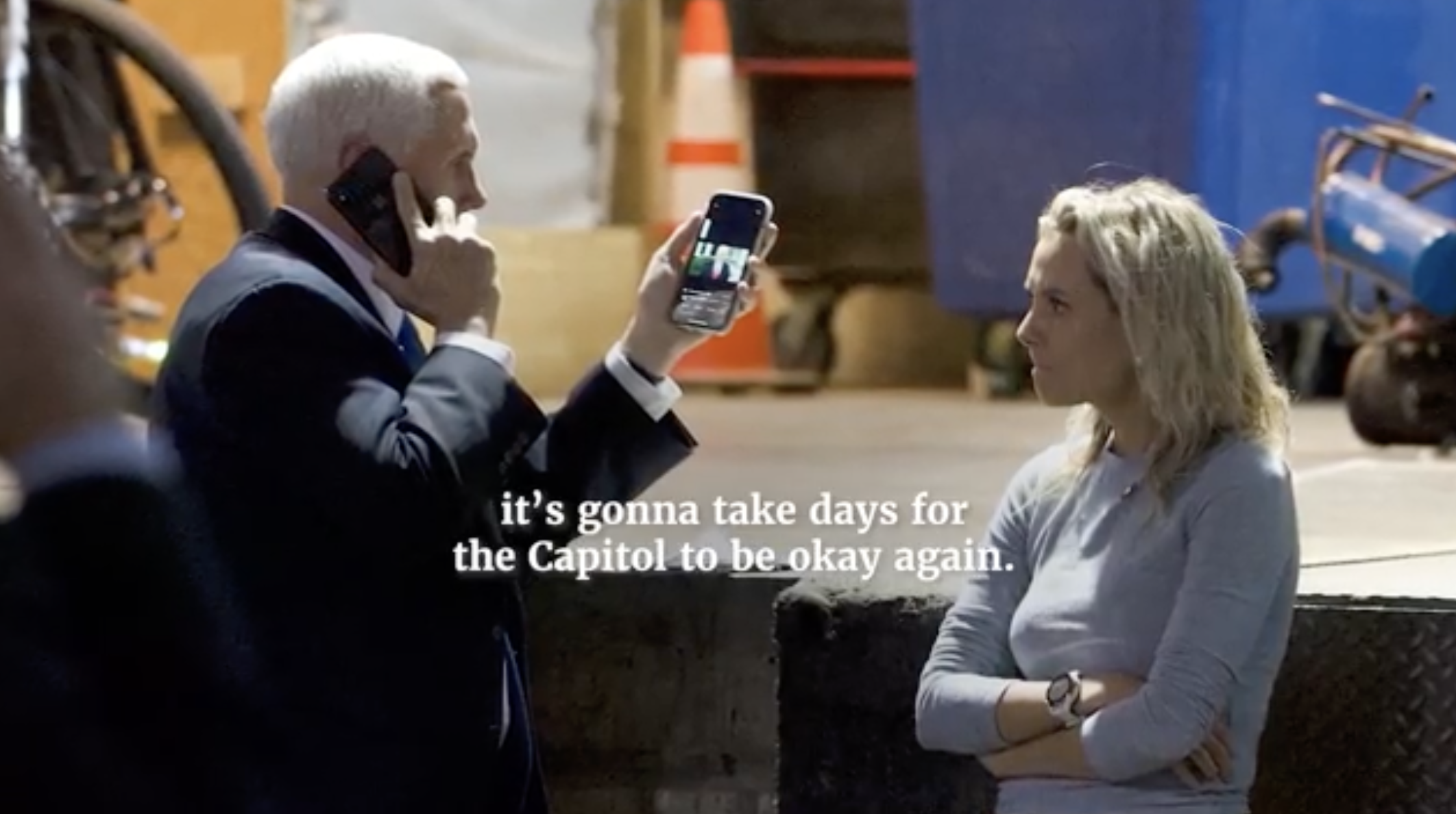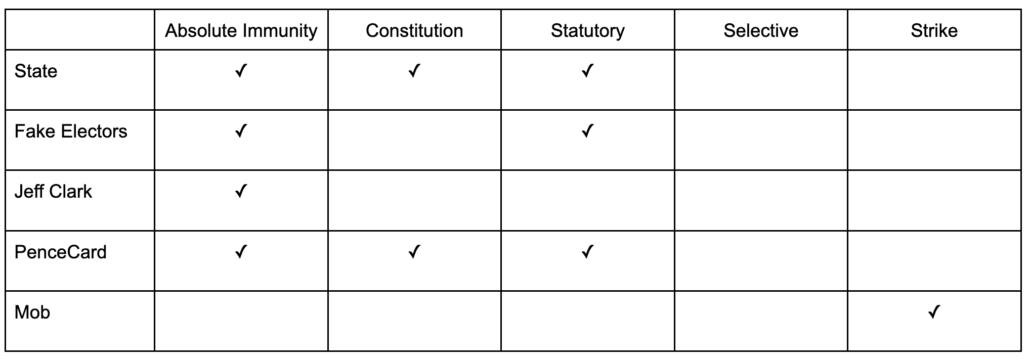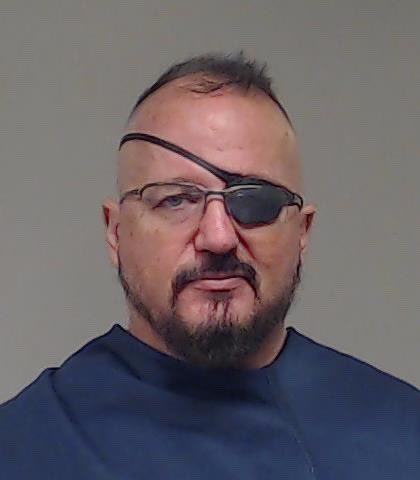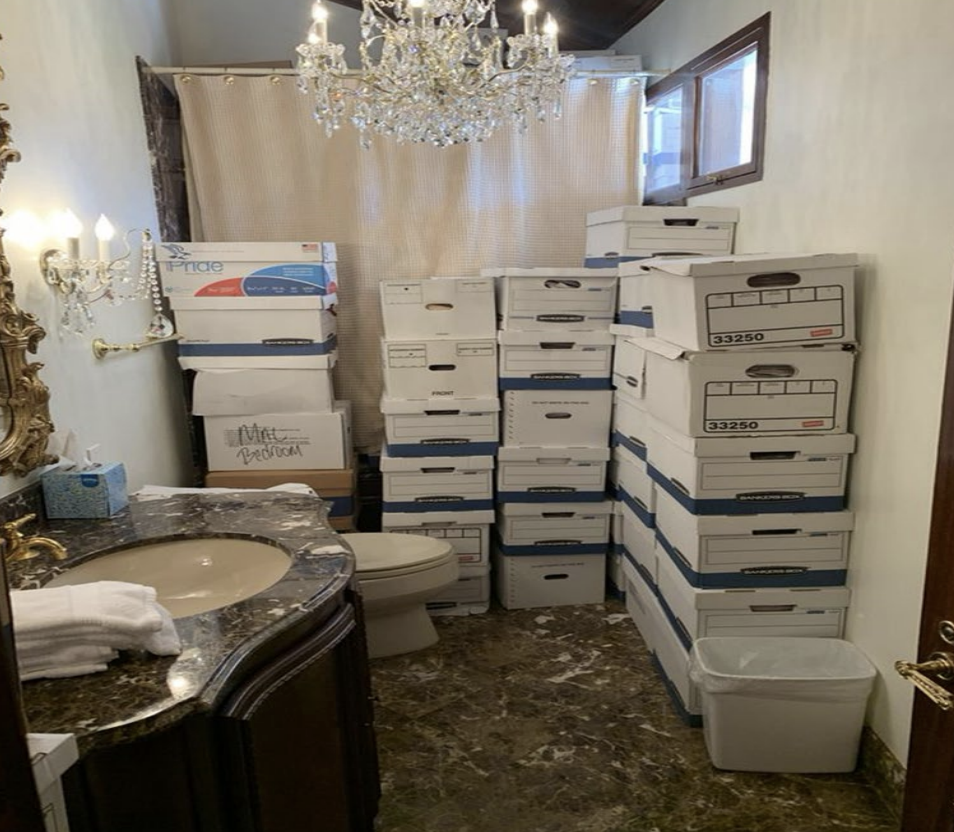Boris Epshteyn’s Absence and Presence in Trump’s Alleged Crime Spree
ABC had a story yesterday revealing details about Trump attorney Jennifer Little’s role in the former president’s stolen document case. Most commentators are focused on the warning that Little testified she gave Trump: that failing to comply with a subpoena would be a crime.
But the backstory it tells is more interesting to me. It describes that Little — who continues to represent Trump on the Georgia case, though specialists in Georgia’s RICO law have also joined that team — was hired (the implication is, for the Georgia investigation) in March 2021 and only a year later did some other things for him.
Little was first hired by Trump in March 2021, only a couple of months after he left the White House, and shortly after authorities in Georgia launched their election-related probe. But more than a year later, she ended up briefly helping Trump with other matters.
When DOJ subpoenaed Trump in May 2022, Little suggested bringing in someone, “who had handled federal cases,” which is reportedly why Evan Corcoran — someone totally inappropriate to a classified documents case, but someone who was then representing Steve Bannon in his contempt case — was brought in. In any case, I’m fairly certain Trump was already represented by people who had federal experience.
Little attended a May 23 meeting and, per ABC’s report, told Trump to take the subpoena seriously.
Four months later, believing Trump still possessed even more classified documents, the Justice Department issued its subpoena to him. Little suggested retaining an attorney who had handled federal cases before, so Corcoran was then hired, and she essentially handed over the matter to him, sources said.
On May 23, 2022 — 12 days after receiving the subpoena — Little and Corcoran met with the former president at Mar-a-Lago. It was Corcoran’s first time meeting Trump in person, and Little allegedly wanted to help ease Corcoran into his new role.
But, as sources described it to ABC News, Little told investigators she had a bigger purpose in going to that meeting: She wanted to explain to Trump that whatever happened before with the National Archives “just doesn’t matter,” especially because Trump never swore to them, under the penalty of perjury, that he had turned everything over, sources said. But whatever happens now has “a legal ramification,” Little said she tried to emphasize to Trump, according to the sources. [emphasis of passive voice my own]
That means that Little — and not Boris Epshteyn, as I and others had suspected — is Trump Attorney 2 in the indictment.
The indictment describes that Little and Evan Corcoran informed Trump about the subpoena, after which he authorized Corcoran, not Little, to accept service. The two lawyers met with Trump together on May 23.
53. On May 11, 2022, the grand jury issued a subpoena (the “May 11 Subpoena”) to The Office of Donald J. Trump requiring the production of all documents with classification markings in the possession, custody, or control of TRUMP or The Office of Donald J. Trump. Two attorneys representing TRUMP (“Trump Attorney 1” and “Trump Attorney 2”) informed TRUMP of the May 11 Subpoena, and he authorized Trump Attorney 1 to accept service.
54. On May 22, 2022, NAUTA entered the Storage Room at 3:47 p.m. and left approximately 34 minutes later, carrying one of TRUMP’s boxes.
55. On May 23, 2022, TRUMP met with Trump Attorney 1 and Trump Attorney 2 at The Mar-a-Lago Club to discuss the response to the May 11 Subpoena. Trump Attorney 1 and Trump Attorney 2 told TRUMP that they needed to search for documents that would be responsive to the subpoena and provide a certification that there had been compliance with the subpoena. TRUMP, in sum and substance, made the following statements, among others, as memorialized by Trump Attorney 1:
a. I don’t want anybody looking, I don’t want anybody looking through my boxes, I really don’t, I don’t want you looking through my boxes.
b. Well what if we, what happens if we just don’t respond at all or don’t play ball with them?
c. Wouldn’t it be better if we just told them we don’t have anything here?
d. Well look isn’t it better if there are no documents?
56. While meeting with Trump Attorney 1 and Trump Attorney 2 on May 23, TRUMP, in sum and substance, told the following story, as memorialized by Trump Attorney 1:
[Attorney], he was great, he did a great job. You know what? He said, he said that it – that it was him. That he was the one who deleted all of her emails, the 30,000 emails, because they basically dealt with her scheduling and her going to the gym and her having beauty appointments. And he was great. And he, so she didn’t get in any trouble because he said that he was the one who deleted them.
TRUMP related the story more than once that day.
57. On May 23, TRUMP also confirmed his understanding with Trump Attorney 1 that Trump Attorney 1 would return to The Mar-a-Lago Club on June 2 to search for any documents with classification markings to produce in response to the May 11 Subpoena. Trump Attorney 1 made it clear to TRUMP that Trump Attorney 1 would conduct the search for responsive documents by looking through TRUMP’s boxes that had been transported from the White House and remained in storage at The Mar-a-Lago Club. TRUMP indicated that he wanted to be at The Mar-a-Lago Club when Trump Attorney 1 returned to review his boxes on June 2, and that TRUMP would change his summer travel plans to do so. TRUMP told Trump Attorney 2 that Trump Attorney 2 did not need to be present for the review of boxes.
This section of the indictment relies heavily on Corcoran’s notes. Perhaps the only thing that relies on Little’s testimony is the description that Trump told her she did not have to be present to review the boxes — in retrospect, a weird decision, since the task of reviewing the contents of 35 or so boxes in one day is pretty daunting.
The indictment does not include the warning that ABC describes Little giving.
But, she told Trump, if there are any more classified documents, failing to return all of them moving forward will be “a problem,” especially because the subpoena requires a signed certification swearing full compliance, the sources said.
“Once this is signed — if anything else is located — it’s going to be a crime,” sources quoted Little as recalling she told Trump.
The sources said that when investigators asked Little if those messages to Trump “landed,” she responded: “Absolutely.”
The former president said something to the effect of, “OK, I get it,'” the sources said she recalled to investigators.
ABC notes in the story that they previously broke the news of Corcoran giving Trump warnings, warnings which also don’t appear in the indictment.
ABC News reported in September that, according to the notes and what Corcoran later told investigators, Corcoran had warned Trump that if he didn’t comply with the subpoena, he could face legal trouble and that the FBI might search his estate.
As I noted, I and others had previously assumed that Attorney 2 was Boris Epshteyn. That’s because he was centrally involved in this process: he had previously been credited with hiring Corcoran (which is why I bolded the passive voice reference above), he was reported to have recruited Christina Bobb to be the fall-gal on the false declaration, he pushed an aggressive strategy, and then he attempted to retroactively claim that at the time he was doing that, he was representing Trump as a lawyer, not a political consultant.
Remarkably, reporting on Boris’ role in all this has completely disappeared from the story.
Reports obviously sourced to witnesses friendly to the defendant are often an attempt to share information otherwise covered by a protective order with those potentially exposed: it’s a way to compare stories without leaving an obvious trail of witness tampering.
And this story, revealing details of testimony that would be of interest to the quasi-lawyers who were also involved in this process but who weren’t even mentioned in the indictment, comes just weeks after another such leak, of the video testimony from flipped witnesses in the Georgia case.
There may have been two leaks: one, of just the depositions of Jenna Ellis and Sidney Powell, to ABC, and a second, of fragments of the depositions of all four known cooperating witnesses, to WaPo. The lawyer for Misty Hampton, implicated with Powell in the Coffee County plot, admitted to leaking the videos, or at least some of them. But that doesn’t explain why there appear to be two sets of videos.
The ABC set describes Jenna Ellis describing first learning about the fake elector plot from an text thread Epshteyn initiated.
Ellis, who in her remarks alternated between speaking on and off the record with prosecutors, instead discussed only the context surrounding the two incidents she couldn’t divulge, including saying that she first learned about the concept of the fake electors plot from Giuliani and current Trump adviser Boris Epshteyn.
“There was one group [text] thread that Boris initiated when — which was the first time that I learned of it — asking me to just join a phone call,” Ellis told prosecutors, who then stopped her from discussing the details of the call.
The WaPo report includes a version of that.
The former Trump attorney also told prosecutors that she was asked to join a Dec. 7, 2020, conference call with Giuliani and two other Trump campaign officials — Mike Roman, who is also charged in the Georgia case, and Epshteyn — as they talked “legal strategy” with several Republicans who were slated to serve as Trump electors in Pennsylvania.
Ellis said she had not initially been privy to the “fake elector plot” and believed “it had been shielded from me specifically” — though she did not elaborate on why. Ellis said she became aware of the effort when she was added to a group text chain about the plan that included Giuliani, Epshteyn, Roman and Eastman.
It also adds Kenneth Chesebro’s description that Epshteyn, not Rudy Giuliani, was quarterbacking Trump’s efforts to undermine the election.
At one point, a prosecutor asked Chesebro who he thought was “quarterbacking” the Trump campaign’s legal efforts — Giuliani, Eastman or Epshteyn. Chesebro replied that it appeared to be Epshteyn. Epshteyn declined to comment.
Remember: Epshteyn is not charged in the Georgia indictment; Epshteyn is unindicted co-conspirator 3. Mike Roman is charged for the coordinating that both accomplished.
Epshteyn is, however, believed to be co-conspirator 6 in the DC indictment.
I suggested during the discussions about a protective order in DC that Epshteyn may have been the person prosecutors had in mind when objecting to including “other attorney[s] assisting counsel of record” in the case, not least because Trump attorney Todd Blanche also represents Epshteyn.
Epshteyn is not just someone who is known to have been closely involved in the fake elector conspiracy, but he is someone who in the stolen document case served as an “other attorney assisting counsel of record.” Crazier still, Epshteyn shares an attorney with Trump: Todd Blanche, who represents Trump in the Alvin Bragg case, the stolen documents case, and now the January 6 case. Epshteyn, who has never filed a notice of appearance for Trump, has followed him around to his various arraignments as if he is family.
If DOJ has a specific concern about Trump sharing discovery with Epshteyn — who has been centrally involved in Trump’s efforts to combat his legal jeopardy by attacking rule of law — this is the kind of objection they might raise.
I had already contemplated whether some of the exhibits submitted with a discovery motion (which on reflection, was submitted by Blanche) were intended to share information, including details about what Trump is trying to obtain under CIPA. For example, the initial 49-page discovery memo included with the motion would be really valuable to any unindicted co-conspirators who might find a way to access the unredacted copy submitted under seal. Aside from references to the general January 6 database (which is mentioned at more length in another file submitted), it is otherwise only cited for references to this redacted paragraph that by context appears to pertain to discovery relating to the Secret Service.
The motion itself has helpful details about how prosecutors on one Jack Smith investigation sat in on interviews of witnesses in the other Jack Smith investigation.
For example, the Special Counsel’s Office used the same grand jury in this District for matters relating to both cases. Assistant Special Counsel John Pellettieri has appeared on behalf of the Office in this case and in the Florida Case. Senior Assistant Special Counsel (“SASC”) Thomas Windom, who has entered a notice of appearance for the prosecution in this case, participated in at least 27 of the interviews described in discovery produced in the Southern District of Florida. SASC Julie Edelstein, counsel of record in the Florida Case, participated in 29 of the interviews that have been produced in discovery in this case. Jay Bratt, also counsel of record in the Florida Case and Counselor to the Special Counsel, participated in 10 of the interviews that have been produced in discovery in this case. Notwithstanding the clear overlap of personnel and intermixed responsibilities, the Office has sought to artificially narrow its definition of the prosecution team to an unidentified subset of individuals who, apparently in its sole judgment, “are working on this case.” Ex. D. Not so. As the entire Office has participated in this prosecution, both in fact and by General Garland’s Order, the entire Office is subject to the prosecution’s discovery obligations.
This is likely highly misleading: for people who are witnesses in both cases — as, for example, Molly Michael and Alex Cannon would be — DOJ shared both sets of witness 302s in both places (and so some of the Edelstein and Bratt interviews would simply be stolen document interviews shared in January 6 discovery and some of the Windom interviews would be the counterpart). But it is also likely the case that some prosecutors sat in on interviews that would touch on investigative subjects of interest.
Then there’s Blanche’s treatment of it. After objecting back in September when DOJ submitted a filing along with the motion to seal it, that’s what Trump did here (for which Judge Chutkan scolded them), so if DOJ had any objection to the non-redactions in these filings, it would have been too late.
Boris Epshteyn, who was the focus for months of reporting about his role in Trump’s twin federal indictments, has all but disappeared. Indeed, ABC’s scoop about Little makes clear that his reportedly significant role in the stolen documents case never even made the indictment.
But as other recent leaks make clear, his role in both alleged felony conspiracies remains significant.

